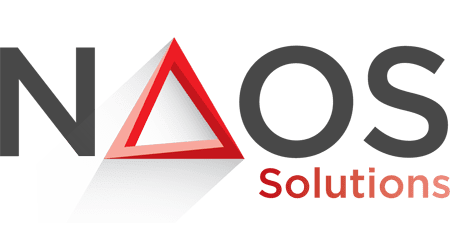Insourcing staff is revolutionizing how forward-thinking HR leaders build agile, compliant teams while maintaining complete operational control—especially in dynamic markets like Egypt, where regulatory changes and economic uncertainties demand smarter workforce strategies.

If you’re an HR director facing the challenge of scaling your team without the complexity of establishing legal entities or the loss of control that comes with traditional outsourcing, you’ve found the right resource. This comprehensive guide will equip you with everything you need to understand, evaluate, and implement insourcing models that align with your specific business objectives.
By the end of this article, you’ll have a clear roadmap for leveraging insourcing to achieve rapid scaling, ensure compliance, and maintain the operational control your organization needs to thrive in today’s competitive landscape.
WHAT DOES “INSOURCING STAFF” ACTUALLY MEAN?
Insourcing staff refers to a strategic workforce model in which a specialized third-party provider supplies dedicated workers who integrate seamlessly into your operations. At the same time, you retain complete managerial authority over their daily activities, performance, and strategic direction.
In this arrangement, you direct day-to-day tasks, handle team development, set performance standards, and make all hiring and termination decisions. You also determine the key performance indicators (KPIs) that measure success and evaluate whether team members meet your organizational standards.
Meanwhile, the insourcing provider manages the employment infrastructure, including contracts, HR administration, payroll processing, local labor law compliance, tax filings, and workspace provisions as needed.
The insourcing model is distinctly different from outsourcing. In insourcing, you lead. Your managers assign work, evaluate performance, set team goals, and decide who joins or leaves the team. The provider functions as an employment facilitator, not a service manager.
Workspace flexibility is another key advantage. Insourced staff can work directly within your premises to maximize integration and cultural alignment. Alternatively, the insourcing provider can supply a dedicated workspace and IT equipment, giving you location flexibility while maintaining operational control.
| What stays in-house: | What the insourcing provider manages: |
|
|
This model proves particularly valuable for organizations expanding into new regions, such as Egypt, without establishing a local legal entity. For example, a multinational company can manage its regional customer service team directly from headquarters. Meanwhile, the team operates locally under compliant employment arrangements managed by an experienced insourcing partner.
THE BIG BENEFITS OF INSOURCING STAFF
Insourcing staff provides a sophisticated middle ground between full in-house hiring and traditional outsourcing, delivering unique benefits that address modern workforce challenges.

Speed to Market
Traditional market entry can consume months of administrative setup while competitive opportunities slip away. Insourcing staff eliminates these delays through pre-established infrastructure and vetted talent pools.
Your insourcing provider handles recruitment screening and employment paperwork, enabling your management team to engage with new hires from day one. This approach typically reduces time-to-productivity by 60-70% compared to establishing local entities and building internal HR infrastructure.
According to McKinsey research on organizational agility, agile organizations can achieve 20-30% cost reductions through efficiency gains, underscoring the competitive advantage of flexible workforce models.
Comprehensive Compliance Management
Expanding into markets like Egypt involves navigating complex labor regulations, tax obligations, and employment law requirements that are subject to frequent changes. The new Egyptian Labor Law No. 14 of 2025, which took effect on September 1, 2025, introduces significant changes to employment practices, including modified dismissal procedures and updated contract requirements. Misclassification errors or compliance oversights can result in substantial penalties and legal complications.
Insourcing staff through experienced local providers shifts these compliance responsibilities to specialists already operating within the regulatory framework. Your insourcing partner stays current with labor law changes, handles statutory filings, and ensures all employment practices comply with local requirements—protecting your organization from costly compliance violations.
Operational Control Without Administrative Burden
Insourcing staff delivers the operational control you need while eliminating employment administration complexities. You define job roles, manage workflows, maintain reporting structures, and make all personnel decisions that affect performance and team dynamics.
Most importantly, you decide whom to hire and whom to terminate, ensuring that team composition aligns with your standards and objectives. You also establish the KPIs that define success, maintaining accountability and performance alignment with your organizational goals.
This level of involvement ensures that performance standards align with your expectations while preserving company culture and operational excellence—a critical factor emphasized by SHRM’s strategic workforce planning research as essential for navigating rapid technological and global market changes.
Strategic Flexibility for Dynamic Markets
Business conditions in emerging markets often require rapid workforce adjustments. Economic fluctuations, seasonal demand, or regulatory changes can require rapid scaling decisions that traditional employment models cannot accommodate efficiently.
Insourcing staff enables agile headcount management with reduced risk exposure. Whether you need to scale for seasonal peaks, pilot new market initiatives, or adjust to changing business conditions, the model provides scalability without long-term employment commitments or complex termination procedures.

STAFFING MODELS COMPARED: WHAT YOU GAIN OR GIVE UP
Different workforce models offer varying levels of control, complexity, and strategic value. Selecting the right approach depends on your specific objectives, risk tolerance, and operational requirements.
| Model | Who Manages Work | Who Employs | Best For | Control Level |
| In-house hiring | You | You | Long-term, strategic roles | Complete |
| Insourcing staff | You | Partner | Fast scaling companies | High |
| Outsourcing | Partner | Partner | Non-core, transactional tasks | Limited |
| PEO/EOR | You | Partner | Market entry without an entity | Moderate |
Insourcing staff occupies a unique strategic position between complete delegation and full ownership. You retain authority over daily operations, performance management, and team development while transferring employment logistics to specialists. This arrangement provides operational control without administrative complexity.
Traditional outsourcing requires surrendering control over day-to-day management. The outsourcing provider manages both employment and operations, limiting your direct influence on performance, culture, and strategic alignment.
PEO (Professional Employer Organization) and EOR (Employer of Record) arrangements primarily focus on compliance and administrative simplification, rather than performance management integration. According to U.S. Chamber of Commerce analysis, PEOs act as co-employers primarily for administrative purposes, while EORs serve as legal employers in jurisdictions where your business isn’t registered. However, these models typically don’t provide the operational management support or cultural integration that insourcing staff delivers. PEO/EOR providers function as administrative facilitators rather than strategic workforce partners.
Understanding these differences is just the first step. Choosing the right model for your organization requires evaluating your control needs, management capacity, timeline constraints, and cost priorities. Our comprehensive comparison guide provides a systematic decision framework to help you make this critical choice.
STRATEGIC APPLICATIONS: WHEN INSOURCING STAFF DELIVERS MAXIMUM VALUE
Insourcing staff must align with specific operational requirements to maximize strategic value. Here are proven scenarios in which this model delivers a significant competitive advantage.

Managing Seasonal Workforce Fluctuations Without Internal HR Strain
Organizations experiencing seasonal demand spikes—such as retail during holiday periods, hospitality during peak travel seasons, or e-commerce during promotional campaigns—face the challenge of rapidly scaling their workforce without overwhelming internal HR resources.
Traditional seasonal hiring strains HR departments with recruitment, onboarding, and compliance management across multiple markets. Research from UKG on seasonal workforce management highlights the importance of an established recruitment infrastructure and clear performance management systems to achieve seasonal success.
Insourcing staff enables rapid expansion through an established recruitment infrastructure, while maintaining control over team objectives, quality standards, and performance metrics.
Your insourcing partner manages the administrative complexity, allowing you to focus on operational excellence and customer satisfaction during critical revenue periods.
Mitigating Misclassification Risks in Off-Payroll Arrangements
Misclassification risks arise when companies classify independent contractors or freelancers as employees, even when their work arrangements are independent. These risks are particularly significant in jurisdictions with strict labor law enforcement.
Common misclassification triggers include:
- Contractors following company schedules and policies
- Using company-provided tools and equipment exclusively
- Receiving direct supervision and performance management
- Working solely for one client over extended periods
- Performing tasks integral to core business operations
Why misclassification matters: Regulatory authorities can retroactively reclassify contractors as employees, resulting in substantial penalties, back pay of benefits, tax liabilities, and potential legal action. Research from WorkMotion on employee misclassification shows that misclassification can affect finances, reputation, and market-entry capabilities. In markets like Egypt, where labor law enforcement is becoming increasingly stringent, these risks can pose a significant threat to business continuity.
Insourcing staff eliminates misclassification exposure by establishing proper employer-employee relationships through your provider while maintaining your operational control. The provider assumes legal responsibility for employment classification, compliance monitoring, and regulatory compliance—protecting your organization from costly reclassification.
Testing Organizational Structures Before Permanent Commitments
Introducing new departments, regional operations, or functional teams involves uncertainty about optimal structure, resource requirements, and market viability. Making permanent hiring commitments before validating these elements can lead to costly restructuring or termination costs.
Insourcing staff provides a structured testing environment where you can manage performance, adjust roles, and refine strategies in real time without long-term employment obligations. This approach enables data-driven decisions about permanent organizational changes based on actual performance metrics rather than theoretical projections.
If the structure proves successful, you can choose to internalize the team, continue with the insourcing model, or modify the approach based on operational insights—all with minimal disruption to ongoing operations.

Managing Project-Based Workforce Requirements
Defined-duration contracts—such as system implementations, market research projects, or compliance audits—require specialized skills without creating permanent roles. Traditional hiring for temporary projects creates administrative complexity and potential termination costs when projects end.
Insourcing staff enables the assembly of project teams with clear start and end parameters. You retain hands-on management of deliverables, timelines, and quality standards while your provider handles employment documentation, payroll processing, and termination procedures.
This model is particularly effective for technical projects that require close collaboration with internal teams and have predetermined completion dates.
Building Regional Sales Operations in Growth Markets
Consider expanding into Egypt to capture emerging market opportunities. You need sales representatives who understand local market dynamics, speak the regional language, and can build customer relationships while reporting directly to your global sales leadership.
Establishing a legal entity involves months of regulatory procedures, legal costs, and ongoing compliance obligations that may not justify initial investments in market testing.
Insourcing staff solves this expansion challenge efficiently. Your sales management team leads strategy development, oversees pipeline performance, maintains CRM visibility, and directs customer relationship management. Meanwhile, your local insourcing partner handles legal employment requirements and regulatory compliance.
This approach enables rapid market entry with full operational control while minimizing regulatory complexity and initial investment requirements.
IMPLEMENTATION BEST PRACTICES: MAXIMIZING INSOURCING SUCCESS
Insourcing staff requires strategic implementation to achieve optimal results. Success depends on structured execution, clear accountability frameworks, and ongoing performance management.
Select Providers with Proven Local Expertise
Begin with a comprehensive provider evaluation focusing on local legal knowledge, compliance infrastructure, and operational track record. Your insourcing partner should demonstrate established systems for employment management, tax compliance, and adherence to labor laws in your target market.
Essential evaluation criteria:
- Verified experience in your industry and region
- Clear explanations of compliance processes and legal frameworks
- Established payroll and benefits administration systems
- References from companies with similar operational requirements
- Transparent pricing structures with defined service levels
Avoid providers who cannot articulate specific compliance procedures or demonstrate established operational infrastructure.

Define Management Authority and Operational Responsibilities
Even though third parties employ insourced team members, your organization directs all operational activities. Establish clear management frameworks to prevent confusion and ensure seamless integration.
Critical role definitions:
- Daily supervision and task assignment responsibilities
- Performance review processes and evaluation criteria
- Training delivery and professional development oversight
- Escalation procedures for performance or behavioral issues
- Communication protocols between internal managers and providers
Document these arrangements clearly and ensure both internal managers and provider representatives understand operational boundaries and accountability frameworks.
Establish Integration Systems from Day One
Treat insourced staff as integral team members, providing them with full access to company tools, policies, training resources, and communication systems. Create reporting structures and regular check-in processes that maintain continuous operational visibility.
Best practices for seasonal workforce management emphasize consistent onboarding processes and clear communication protocols—principles that apply equally to both insourced and outsourced teams.
Your internal HR and operations teams should participate actively in communication flows to ensure alignment and prevent operational gaps. When all stakeholders maintain consistent information sharing, you minimize the risks of miscommunication and maximize team effectiveness.
Implement Performance Management Standards
Hold insourced staff to identical performance standards as full-time team members. This includes KPI tracking, progress reviews, feedback cycles, and performance improvement processes.
Key performance management elements:
- Establish measurable objectives and success metrics
- Conduct regular performance evaluations (weekly/monthly, based on role requirements)
- Track customer-facing metrics such as response times, resolution rates, or satisfaction scores
- Address performance gaps promptly through structured feedback
- Maintain documentation for ongoing performance assessment
Your designated managers should consistently review results and communicate any issues with your provider immediately. This ongoing oversight ensures the model delivers expected operational value.
CONCLUSION: SMART WORKFORCE STRATEGY FOR COMPETITIVE ADVANTAGE
Insourcing staff is a proven approach for organizations that require rapid expansion, seasonal scaling, or compliance-focused workforce management without sacrificing operational control. While traditional models, such as outsourcing and in-house hiring, serve specific purposes, they often struggle to meet the speed and flexibility requirements of modern business environments.
Insourcing staff offers the strategic flexibility that growth-focused organizations need—enabling rapid market expansion, regulatory compliance, and operational excellence simultaneously.
For HR leaders managing expansion in Egypt or implementing scalable workforce models that preserve management authority, the insourcing approach delivers competitive advantages through established expertise and local knowledge.
Are you ready to explore how insourcing staff can accelerate your workforce strategy while maintaining the control your organization requires? Connect with our insourcing specialists to discuss your specific requirements and discover how 15+ years of HR outsourcing expertise can support your growth objectives with compliant, efficient workforce solutions.
Contact NAOS Solutions today to build your team the smart way and transform workforce challenges into competitive advantages.

